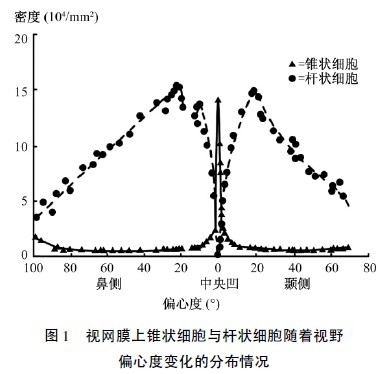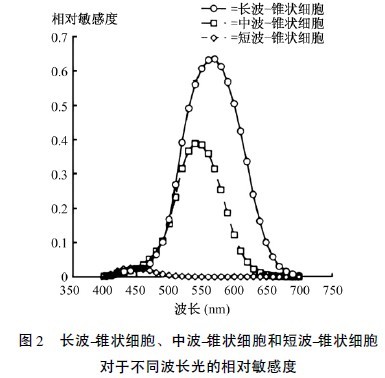1 Introduction
According to the International Commission on Illumination (CIE), the brightness level of Mesopic Vision ranges from 0.001 to 3 cd/m2, between Photopic vision (brightness level greater than 3 cd/m2) and dark vision (Scotopic). Vision, the brightness level is less than 0. 001 cd /m2 ) [1], the pedestrian road illumination is in the middle visual brightness range. At present, the methods of studying intermediate vision in the world mainly include brightness matching method and visual function method [2]. Early research focused on the former, and in the past decade, the latter has been increasingly valued by researchers because it is closer to the actual visual situation. The CIE 1-58 Technical Committee released in 2010 CIE 191:2010, which recommended a visual efficiency-based intermediate vision photometric system model [3], which helps to develop related visual operations under intermediate vision conditions. In-depth study of efficacy. The current research mainly focuses on motor vehicle road lighting, and less involves pedestrian roads, while visual operations in motor vehicle roads and pedestrian road lighting scenes vary widely. In actual pedestrian road lighting scenes, road surface illuminance, vertical illuminance, brightness and brightness contrast, glare, light distribution, etc. are all important lighting factors that affect visual recognition. However, under different adaptive brightness conditions in the pavement, the sensitivity of the activated human eye photoreceptor cells to the spectrum is significantly different [4], so that the spectral energy distribution (SPD, Spectral power distribution) of the light source produces visual work for pedestrians. Significant influence. However, from the current research in the field of intermediate vision, the impact of SPD on what kind of visual operations in real scenes, and the degree of influence on these visual operations have not yet been unified [5,6].
This paper has three purposes: First, theoretically, to find evidence that SPD is an important factor affecting visual recognition under pedestrian road lighting conditions; secondly, to understand the lighting needs in the real scene of pedestrian road lighting, and the most important visual operations are Third, objectively analyze past research, evaluate whether the impact of SPD on visual recognition has been confirmed, to what extent the relevant research, if not, what experimental work we need to do next.
2 Visual physiology of the human eye under intermediate vision
There are four photoreceptors in the retina of the human visual system, each containing a different photopigment, so there is a difference in spectral sensitivity for different SPDs. These four photoreceptors can be divided into two categories: rod cells and cone cells. All rod cells have the same spectral sensitivity. The other three types of sensitization are collectively referred to as cone cells (short-cone, medium-cone and long-wave-cone, respectively), and each photoreceptor has significant differences in sensitivity to light of different wavelengths. Distribution of rod-shaped cells and cone-shaped cells on the retina Figure 1 The distribution of cone-shaped cells and rod-shaped cells on the retina with the eccentricity of the visual field is uneven (see Figure 1), and the cone-shaped cells are mainly concentrated in the visual axis. A small number of cone-shaped cells are also distributed in a small area of ​​the fovea, and other areas on the retina. There are no rod-shaped cells at the macula, and the density of rod-shaped cells is getting larger and larger from the fovea, reaching a maximum at about 15° from the visual axis. The distribution of the three cone-shaped cells on the retina is also uneven. The medium-cone-like cells and long-wave-cone cells are mainly concentrated in the fovea, while the short-wave-cone cells are concentrated in the periphery of the fovea, but then outward. There has been a sharp drop in the region [4].

Due to the different light sensitivity of cone cells and rod cells and the different regions distributed in the retina, these two types of cells play different roles in specific visual operations. Rod cells have objects for activities around the field of vision. High recognition ability, and high sensitivity compared with cone cells, it is very helpful for identifying dark objects, but has no ability to distinguish colors. The cone cells are mainly used to observe the movement, shape, color and other details of various objects in the line of vision. In the intermediate vision state from the transition from bright vision to dark vision, the cone cells work together with the rod-shaped cells, but the number of cone-shaped photoreceptors activated in the retina of the human eye is gradually reduced, and the number of rod-shaped cells is increasing. The spectral sensitivity curve that causes the eye to respond gradually shifts toward the short-wave direction. The maximum spectral optical performance value also approaches from 555 nm of the bright vision to 507 nm of the dark vision. This phenomenon is called “Purkinje offset†( Purkinje Shift). This change is determined by the spectral sensitivity characteristics of the photoreceptor cells in the human retina. Therefore, when performing certain visual operations, the influence of different SPD light sources on visual operations may be quite different.
In terms of color visual information processing, there are three kinds of visual channels, which depend on the spectral sensitivity of the three cone cells to different wavelengths of light (see Figure 2), so that the light source SPD visualizes the human eye in terms of color vision. Processing is crucial. According to the mutual combination of the three cone cells, a non-color non-antagonistic channel and two color antagonist channels can be obtained, which are a non-color channel, a red-green antagonist channel and a yellow-blue antagonist channel, respectively. The antagonistic structure of these color vision systems determines the perception of color in visual operations [4, 7], and the three channels, whether bright or intermediate, are activated together.

From the analysis of the physiological characteristics of the above human eyes under intermediate vision conditions, it is known that different photoreceptor cells have different spectral sensitivity, and different photoreceptor cells functioning in different field of view angles, as well as color visual information processing. The presence of three color channels makes it necessary for the light source SPD to have an impact on the visual work in pedestrian road lighting under intermediate visual conditions of different adaptation brightness.
3 visual work in pedestrian road lighting scenes
To understand the effects of spectral energy distribution (SPD) of light source on visual recognition in pedestrian road lighting, first of all, what are the main visual operations in real pedestrian road lighting scenarios?
From the relevant theory, people's needs have physiological, security, social and self-value realization requirements, which is also the most basic needs of pedestrians. In pedestrian road lighting, first of all, it should satisfy the characteristics of the environment to meet the needs of pedestrians for the sense of safety, comfort and brightness of the environment; to meet the pedestrians in the process of walking can detect the height difference or obstacles on the ground; The Pacers have enough time to identify the clothing, movements, and facial features of the pedestrians to determine their intentions, take defensive actions or evade when necessary; it is easier to recognize the signs and logos. The visual work of pedestrians is very different from the demand and the driver. The lighting indicators that meet the visual efficacy requirements of motor vehicles drivers may not be suitable for pedestrian roads. The moving speed in the walking road is slow. In the real visual process, a variety of visual operations often occur at the same time. For example, when pedestrians are walking, they use the residual light to feel the passers-by on the roadside, and instead turn to the past to identify the facial features of the passerby. At the same time, it will also pay attention to its clothes, movements, etc. Even at this time, it will use the residual light to observe the possible situation around the obstacles and obstacles and ground height differences, and may turn to see the possible signs and signs. The visual tasks associated with this series of visual activities are very complex. These visual operations require the detection of off-axis first, followed by the use of on-axis fovea. Partly observe the details and alternate between peripheral vision and online vision. Therefore, we can simplify and abstract the complex visual processes in these walks into a single visual job, such as face recognition, obstacle detection, logo recognition, color recognition, etc., which are also the most basic in pedestrian road lighting. The main content.